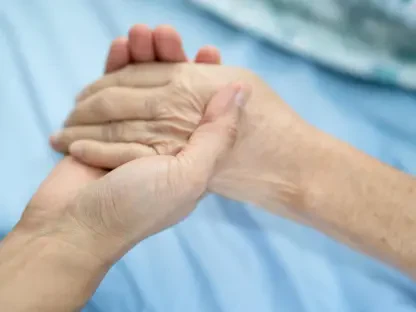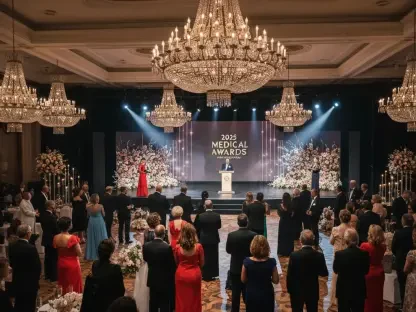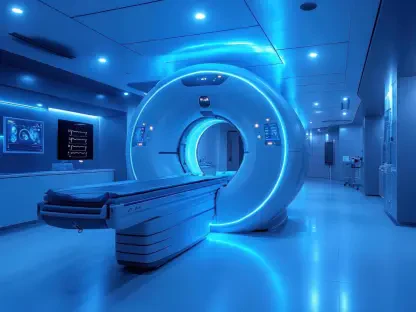Welcome to an insightful conversation on the evolving landscape of healthcare mergers and antitrust regulations. Today, we’re joined by Faisal Zain, a renowned healthcare expert specializing in medical technology. With his deep experience in the manufacturing of diagnostic and treatment devices, Faisal brings a unique perspective on innovation and competition in healthcare. In this interview, we’ll dive into the recent proposed settlement between UnitedHealth Group, Amedisys, and the Department of Justice regarding a $3.3 billion acquisition. We’ll explore the implications of divestitures, the role of oversight in such deals, and the broader impact on patients and the industry.
How would you describe the core issue behind the proposed settlement between UnitedHealth Group, Amedisys, and the Department of Justice regarding this major acquisition?
At its heart, this settlement is about addressing antitrust concerns in a $3.3 billion deal where UnitedHealth Group’s Optum aims to acquire Amedisys, a significant player in home health and hospice care. The Department of Justice stepped in because they saw a risk of reduced competition, especially since UnitedHealth already owns LHC Group, another major home health provider. The worry is that consolidating these entities could lead to higher prices or lower quality of care for vulnerable patients. The settlement requires the companies to divest 164 home health and hospice locations across 19 states to maintain competitive balance in those markets.
What prompted the Department of Justice to intervene in this deal, and why is competition such a focal point here?
The DOJ got involved because they believed this acquisition could stifle competition in the home health and hospice sector, which directly impacts hundreds of thousands of patients and the wages of healthcare workers like nurses. After UnitedHealth acquired LHC Group, adding Amedisys to their portfolio raised red flags about market dominance. Competition in healthcare isn’t just about business—it’s about ensuring patients have access to affordable, high-quality care and that providers aren’t squeezed out. The DOJ’s role is to prevent monopolistic behavior that could harm both consumers and the workforce.
Can you explain why divesting 164 locations is a critical part of this settlement, and what it means for the healthcare landscape?
Divesting these 164 locations, which generate about $528 million in annual revenue, is essential to preserve competition in specific markets where UnitedHealth and Amedisys overlap. Without this, the combined entity could dominate pricing and service quality in those areas, potentially to the detriment of patients. By selling these facilities to other companies, the settlement aims to ensure that multiple players remain in the game, offering choices to consumers and keeping the market dynamic. The DOJ has called this one of the largest divestitures of outpatient healthcare services in a merger challenge, underscoring its significance.
Who are the buyers of these divested locations, and what factors might have influenced their selection?
The buyers are BrightSpring Health Services and The Pennant Group, both established in the home health and hospice space. Their selection likely hinges on their ability to operate these facilities effectively and maintain competition in the affected markets. However, there’s some controversy here—BrightSpring is backed by a private equity firm currently facing its own antitrust scrutiny, and one of Pennant’s owners has a history of legal settlements with the DOJ. The choice of buyers might reflect a balance between finding capable operators and ensuring the divestitures happen swiftly to move the deal forward.
There’s a mention of potentially divesting eight additional facilities if certain conditions aren’t met. Can you shed light on what that contingency is about?
Yes, the settlement includes a provision that UnitedHealth might need to divest eight more facilities if they fail to secure necessary approvals for selling related assets. These approvals could involve state regulators or other authorities who need to sign off on the transfer of specific operations or licenses tied to these locations. It’s a safeguard to ensure that the competitive balance isn’t disrupted by unforeseen hurdles in the divestiture process. If these additional divestitures occur, it could slightly reshape the scope of the deal but likely won’t derail the overall acquisition.
What role does the appointed monitor play in this settlement, and why is their presence significant?
The monitor is essentially an independent overseer tasked with ensuring that the divestiture process adheres to the settlement terms. Their job is to watch over the transfer of these 164 locations—and potentially more—to confirm that UnitedHealth and Amedisys follow through without undermining competition. This is significant because large mergers like this can involve complex logistics, and without oversight, there’s a risk of non-compliance or delays that could harm the market. The monitor acts as a check to protect the integrity of the agreement and ultimately the interests of patients and providers.
Amedisys is facing a $1.1 million penalty and mandatory antitrust training for its leadership. Can you explain what led to this consequence?
Amedisys got hit with this penalty because they falsely certified that they had fully responded to federal document requests during the DOJ’s investigation. This kind of misstatement can delay or complicate the review process, which is critical in assessing the competitive impact of a merger. The fine serves as a deterrent for such lapses, while the training requirement aims to equip their leadership with a better understanding of antitrust laws. It’s about ensuring that future dealings with regulators are transparent and compliant, preventing similar missteps down the line.
UnitedHealth and Amedisys have expressed optimism about this settlement. From your perspective, how do they see this deal benefiting the healthcare industry?
Both companies view this merger as a step toward enhancing home health and hospice care. UnitedHealth’s Optum has emphasized their commitment to value-based care, suggesting that integrating Amedisys will allow them to drive innovation and improve outcomes in this space. Amedisys, on the other hand, sees this as a milestone in their growth, enabling them to deliver exceptional care to more patients through strategic alignment with Optum. They’re framing it as a win for patients and families, promising better access to services and more innovative solutions, though critics remain skeptical about whether these benefits will outweigh potential downsides like reduced competition.
Looking ahead, what is your forecast for the impact of large healthcare mergers like this on patients and competition in the industry?
I think we’re at a crossroads with healthcare mergers. On one hand, consolidation can bring efficiencies, like better technology integration or coordinated care, which could benefit patients if done right. On the other, the risk of reduced competition is real—fewer players often mean higher costs and less incentive to improve quality, especially for vulnerable populations like hospice patients. I expect regulators like the DOJ to keep tightening scrutiny, pushing for more divestitures or conditions in these deals. The challenge will be balancing innovation with access, and I suspect we’ll see ongoing debates about whether these mega-mergers truly serve the public interest or just corporate bottom lines.









